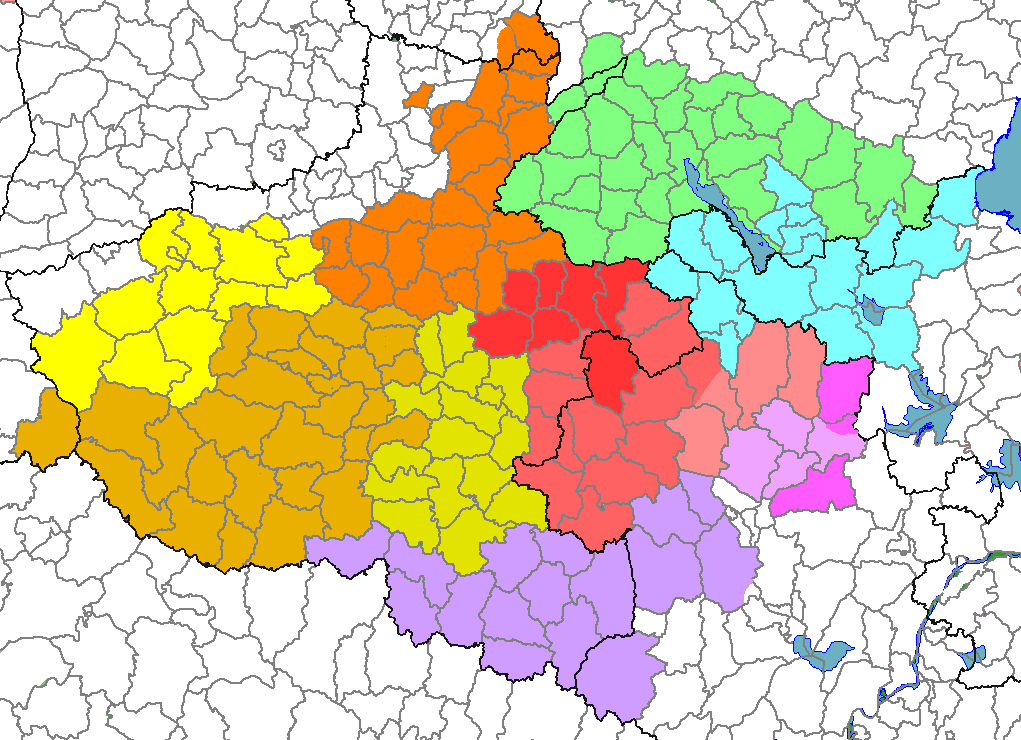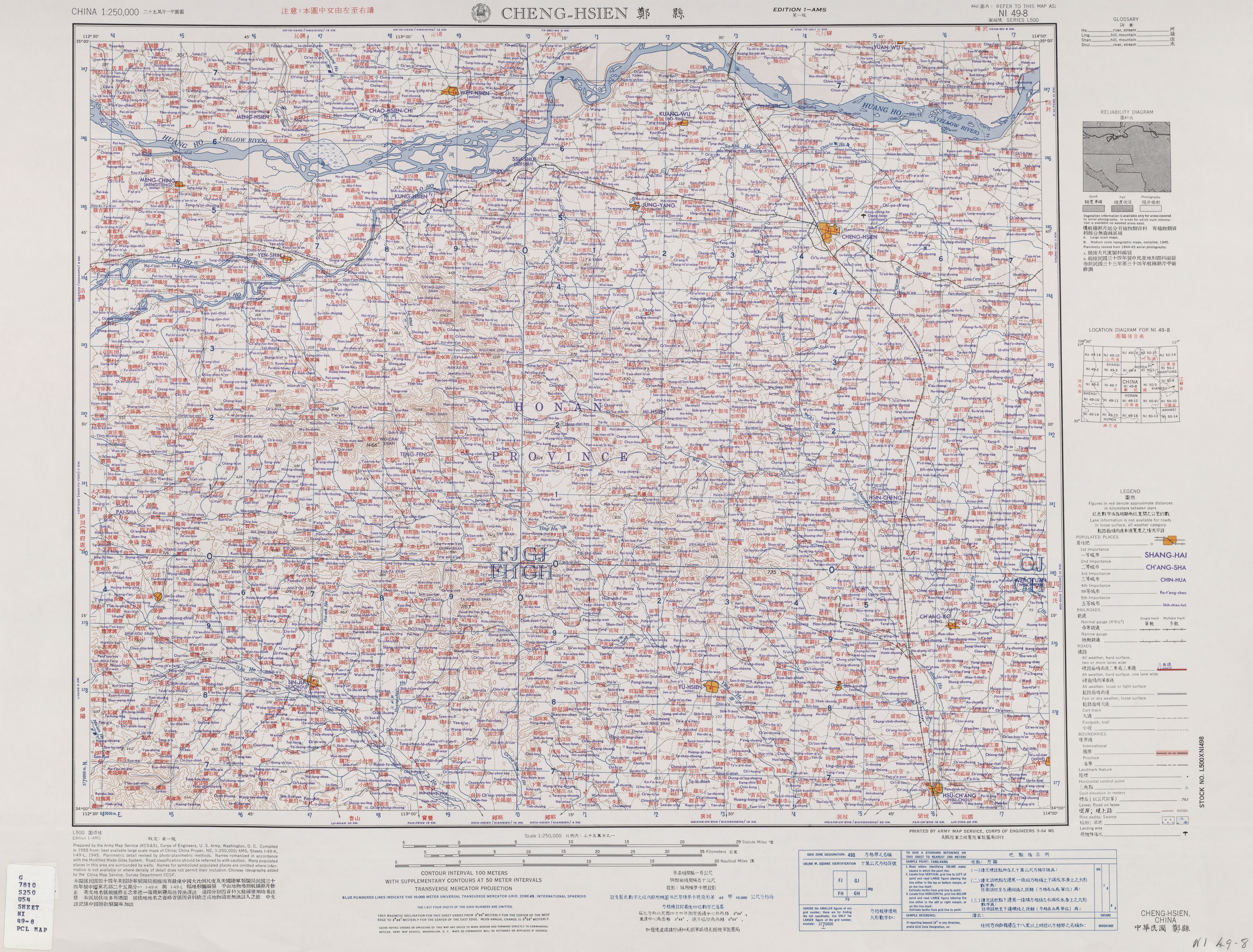|
Central Plains Mandarin
Central Plains Mandarin, or ''Zhongyuan'' Mandarin (), is a variety of Mandarin Chinese spoken in the central and southern parts of Shaanxi, Henan, southwestern part of Shanxi, southern part of Gansu, far southern part of Hebei, northern Anhui, northern parts of Jiangsu, southern Xinjiang and southern Shandong. The archaic dialect in Peking opera is a form of Zhongyuan Mandarin. Among Hui people, Zhongyuan Mandarin is sometimes written with the Arabic script, Arabic alphabet, called Xiao'erjing ("Children's script"). Subdialects * Zheng-Kai (郑开) region: e.g. Kaifeng (开封) dialect, Zhengzhou (郑州) dialect * Luo-Song (洛嵩) region: e.g. Luoyang dialect (洛阳话) * Nan-Lu (南阳) region: e.g. Nanyang dialect, Nanyang (南阳) dialect * Luo-Xiang (漯项) region: e.g. Zhumadian (驻马店) dialect * Shang-Fu (商阜) region: e.g. Shangqiu (商丘) dialect, Fuyang (阜阳) dialect * Xin-Beng (信蚌) region: e.g. Xinyang (信阳) dialect, Bengbu (蚌埠) dialect ... [...More Info...] [...Related Items...] OR: [Wikipedia] [Google] [Baidu] |
Yellow River Plain
Zhongyuan (), the Central Plain(s), also known as Zhongtu (, lit. 'central land') and Zhongzhou (, lit. 'central region'), commonly refers to the part of the North China Plain surrounding the lower and middle reaches of the Yellow River, centered on the region between Luoyang and Kaifeng. It has been perceived as the birthplace of the Chinese civilization. Historically, the Huaxia people viewed Zhongyuan as 'the center of the world'. Human activities in the Zhongyuan region can be traced back to the Palaeolithic period. In prehistoric times, Huaxia, a confederation of tribes that later developed into the Han ethnicity, lived along the middle and lower reaches of the Yellow River. The term 'Zhongguo' (Central State) was used to distinguish themselves from the Siyi tribes that were perceived as 'barbaric'. For a large part of Chinese history, Zhongyuan had been the political, economic, and cultural center of the Chinese civilization, as over 20 dynasties had located their capita ... [...More Info...] [...Related Items...] OR: [Wikipedia] [Google] [Baidu] |
Arabic Script
The Arabic script is the writing system used for Arabic (Arabic alphabet) and several other languages of Asia and Africa. It is the second-most widely used alphabetic writing system in the world (after the Latin script), the second-most widely used List of writing systems by adoption, writing system in the world by number of countries using it, and the third-most by number of users (after the Latin and Chinese characters, Chinese scripts). The script was first used to write texts in Arabic, most notably the Quran, the holy book of Islam. With Spread of Islam, the religion's spread, it came to be used as the primary script for many language families, leading to the addition of new letters and other symbols. Such languages still using it are Arabic language, Arabic, Persian language, Persian (Western Persian, Farsi and Dari), Urdu, Uyghur language, Uyghur, Kurdish languages, Kurdish, Pashto, Punjabi language, Punjabi (Shahmukhi), Sindhi language, Sindhi, South Azerbaijani, Azerb ... [...More Info...] [...Related Items...] OR: [Wikipedia] [Google] [Baidu] |
Bengbu
Bengbu () is a city in northern Anhui Province, China. Its population was 3,296,408 registered residents at the 2020 census. 1,968,027 lived in the built-up area made of four Bengbu urban districts and Fengyang County in Chuzhou Prefecture, largely being conurbated. Its name means "Clam Wharf" in Chinese, echoing its former reputation as a freshwater pearl fishery. Administration The prefecture-level city of Bengbu administers seven county-level divisions, including four districts and three counties. These are further divided into 74 township-level divisions, including 36 towns, 19 townships and 19 subdistricts. Geography Bengbu is located in the southeast of the North China Plain, on the Huai River. The built up urbanized area is divided into two parts: greater Bengbu on the south bank of the river and little Bengbu on the north bank. Dragon Lake is on the East side of the urbanized area. On the other side of the lake is the university district, containing four institutions ... [...More Info...] [...Related Items...] OR: [Wikipedia] [Google] [Baidu] |
Xinyang
Xinyang ( zh, s= , t=信陽 , p=Xìnyáng; Postal romanization, postal: Sinyang) is a prefecture-level city in southeastern Henan province of China, province, People's Republic of China, the southernmost administrative division in the province. Its total population was 6,234,401 according to Seventh National Population Census of the People's Republic of China, the 2020 census. As of the 2010 census, 1,230,042 of them lived in the built-up (or metro) area made of two urban districts, Pingqiao and Shihe. History As early as over 8,000 years ago, Neolithic cultures began primitive agriculture of considerable scale along the Huai River, such as the Peiligang culture, Peiligang, Longshan culture, Longshan and Qujialing culture, Qujialing cultures. During the Great Leap Forward, one million farmers died in what was known as the Xinyang Incident. Geography Geography of city The prefecture-level city of Xinyang has a total land area of . The city is located in the southernmost par ... [...More Info...] [...Related Items...] OR: [Wikipedia] [Google] [Baidu] |
Fuyang
Fuyang (, previously romanized as Fowyang) is a prefecture-level city in northwestern Anhui province, China. It is bordered by Henan province to the west and the cities of Bozhou to the northeast, Huainan to the southeast, and Lu'an to the south. Its population was 8,200,264 inhabitants at the 2020 census whom 2,128,538 lived in the built-up (''or metro'') area made of 3 urban districts Yingzhou, Yingdong and Yingquan. History Early Ruyin Starting with the Qin dynasty, the region now called Fuyang was called Ruyin (). Ruyin was classified as part of the ancient province of Yuzhou. In the early Han dynasty, Ruyin was ruled by Xiahou Ying (d. 172 BCE), who fought alongside Liu Bang against the latter's archrival Xiang Yu in the Chu–Han Contention (206–202 BC), and helped Liu Bang establish the Han dynasty. Following the establishment of the Han dynasty, the title conferred upon Xiahou Ying was "Lord of Ruyin" (). The second Lord of Ruyin was Xiahou Ying's son, Xia ... [...More Info...] [...Related Items...] OR: [Wikipedia] [Google] [Baidu] |
Shangqiu
Shangqiu ( zh, ), Postal romanization, alternately romanized as Shangkiu, is a city in eastern Henan province, Central China. It borders Kaifeng to the northwest, Zhoukou to the southwest, and the provinces of Shandong and Anhui to the northeast and southeast respectively. Its population was 7,816,831 inhabitants as of the 2020 Chinese census whom 2,831,814 lived in the built-up (''or metro'') area made up of two urban districts (Liangyuan and Suiyang) and Yucheng county now being conurbated. Shangqiu and surrounding area was an important base for the Shang dynasty (c. 1600 – c. 1046 BC), and the city itself was established more than three millennia ago. Shangqiu has grown significantly in recent years. It is located at an important location at the junction of several major railways, making it a major regional transportation hub. History The history of Shangqiu ("Hills of Shang") is closely related to the very beginning of Chinese history. The tradition dates back to the Three ... [...More Info...] [...Related Items...] OR: [Wikipedia] [Google] [Baidu] |
Zhumadian
Zhumadian ( zh, s= , t= , p=Zhùmǎdiàn; Postal romanization, postal: Chumatien) is a prefecture-level city in southern Henan province of China, province, China. It borders Xinyang to the south, Nanyang, Henan, Nanyang to the west, Pingdingshan to the northwest, Luohe to the north, Zhoukou to the northeast, and the province of Anhui to the east. As of the 2020 Chinese census, its total population was 7,008,427 inhabitants whom 1,466,913 lived in the built-up (or metro) area made of Yicheng District, Zhumadian, Yicheng District and Suiping County now conurbated. It was once the center of the Cai (state), Cai state during the Eastern Zhou era. The state leaves its name in several of the subdivisions including Shangcai County and Xincai County. Administrative divisions The prefecture-level city of Zhumadian administers 1 district of China, district and 9 County (People's Republic of China), counties. *Yicheng District, Zhumadian, Yicheng District () *Runan County () *Pingyu Count ... [...More Info...] [...Related Items...] OR: [Wikipedia] [Google] [Baidu] |
Nanyang Dialect
Nanyang is the romanization of two common Chinese place names. It may refer to: Written as * Nanyang (region), a Chinese term denoting the Southeast Asian lands surrounding the South China Sea ;China * Nanyang Fleet, Qing dynasty naval fleet based in Shanghai * Shanghai Jiao Tong University, originally Nanyang Public School * Nanyang Model High School, or Nanyang Middle School, Shanghai * Nanyang, Yancheng, a town in Tinghu District, Yancheng, Jiangsu ;Malaysia * ''Nanyang Siang Pau'', a Chinese language newspaper ;Singapore * Nanyang, Singapore, a residential precinct * Nanyang Academy of Fine Arts * Nanyang Girls' High School * Nanyang Junior College * Nanyang Polytechnic * Nanyang Primary School * Nanyang Technological University * Hwa Chong Institution, formerly Nanyang Overseas Chinese High School Written as , as in "yin and yang" * Nanyang, Henan, a prefecture-level city * Nanyang Basin, Henan * Nanyang Commandery, a historical region centered in Nanyang City * Nanyang L ... [...More Info...] [...Related Items...] OR: [Wikipedia] [Google] [Baidu] |
Luoyang Dialect
The Luoyang dialect is a dialect of Zhongyuan Mandarin spoken in Luoyang and nearby parts of Henan province. The old Luoyang dialect served as one of historical standards of Chinese from the Warring States period into the Ming Dynasty, which distinguish from the modern Luoyang dialect. It is because Luoyang switched from Southern to Northern Mandarin over history. According to Lü Shuxiang (1985), "In Northern Song dynasty, the dialects at the Central Plains are still in the southern variety f Mandarin the predecessor of modern Northern Mandarin began as a tiny regional dialect near Khanbaliq". Phonology Initials Finals Features *The Middle Chinese entering tone has a different distribution in the Luoyang dialect than in Standard Mandarin. (See entering tone A checked tone, commonly known by the Chinese calque entering tone, is one of the four syllable types in the phonology of Middle Chinese. Although usually translated as "tone", a checked tone is not a tone ... [...More Info...] [...Related Items...] OR: [Wikipedia] [Google] [Baidu] |
Zhengzhou
Zhengzhou is the capital of Henan, China. Located in northern Henan, it is one of the nine National central city, national central cities in China, and serves as the political, economic, technological, and educational center of the province. The Zhengzhou metropolitan area (including Zhengzhou and Kaifeng) is the core area of the Central Plains Economic Zone. The city lies on the southern bank of the Yellow River. Zhengzhou is a major hub of China's domestic and international transportation network; for example, it is connected to Europe and has an international airport. Zhengzhou is a National Civilized City and a List of National Famous Historical and Cultural Cities in China, State-list Famous Historical and Culture City. As of 2020, there are two List of World Heritage Sites in China, World Cultural Heritage Sites in Zhengzhou. The Zhengzhou Commodity Exchange (ZCE) is China's first futures exchange. Zhengzhou Airport Economy Zone is China's first Airport Economy Zone. As o ... [...More Info...] [...Related Items...] OR: [Wikipedia] [Google] [Baidu] |
Kaifeng
Kaifeng ( zh, s=开封, p=Kāifēng) is a prefecture-level city in east-Zhongyuan, central Henan province, China. It is one of the Historical capitals of China, Eight Ancient Capitals of China, having been the capital eight times in history, and is most known for having been the Chinese capital during the Song dynasty#Northern Song, 960–1127, Northern Song dynasty. As of the 2020 Chinese census, 2020 census, 4,824,016 people lived in Kaifeng's Prefecture, of whom 1,735,581 lived in the metropolitan area consisting of Xiangfu, Longting, Shunhe Hui, Gulou and Yuwantai Districts. Located along the Yellow River's southern bank, it borders the provincial capital of Zhengzhou to the west, Xinxiang to the northwest, Shangqiu to the east, Zhoukou to the southeast, Xuchang to the southwest, and Heze of Shandong to the northeast. Kaifeng is a major city for scientific research, appearing among the world's top 200 List of cities by scientific output, cities by scientific output as track ... [...More Info...] [...Related Items...] OR: [Wikipedia] [Google] [Baidu] |






